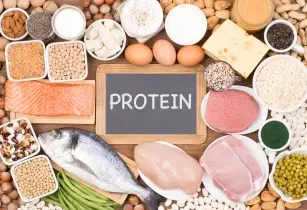The environmental footprints of certain foodstuffs, calculated per unit of protein produced, risk misinforming food stakeholders and consumers, according to a new study
The nutritional value of foodstuffs needs to be fully considered when scientists are trying to calculate the environmental impact of producing different foods, say the authors.
The study took a measure of protein quality called the Digestible Indispensable Amino Acid Score (DIAAS) and used it to create ‘adjusted’ environmental footprint metrics for a variety of foods. Using this method, many animal-based products’ environmental impacts were almost halved (e.g., dairy beef) whilst the impacts associated with wheat bread, for instance, increased by almost 60%.
Rothamsted’s Graham McAuliffe, the lead author of the study, said, “This study highlights the need for both nutritional and environmental sciences to be taken into account to fully understand the impact that food production has on human and environmental health.”
The team used the DIAAS score to represent how digestible a food item’s amino acids are. When this is applied to four animal-based foods (dairy beef, cheese, eggs, and pork) and four plant based protein sources (nuts, peas, tofu, and wheat), all the animal-based products scored more than 100% DIAAS due to their highly digestible structure and lack of inhibitory compound;, Tofu had a DIAAS of 105%, whilst the three other plant-based protein sources scored under 100%, with wheat scoring particularly poorly (43%).
A healthy average human would need to consume much more low-DIAAS products to achieve the same protein benefit compared with high-DIAAS products, thus leading to more production and associated environmental impact to reach the same level of recommended intake.
“Food items are rarely consumed in isolation, and therefore one of the major recommendations we urge future nutritionally-focussed sustainability assessors to consider is the complementarity of food at, for instance, the meal level or multi-meal level,” stated McAuliffe.
According to him, this is a critically important factor for consideration as low DIAAS values in one item may be offset by higher scores in other foods, thereby allowing targeted assessments of protein delivery for different regions, nations, or populations which may be deficient in a certain IAA.
The team also caution that environmental impacts should only form part of the sustainability picture. Future work should incorporate socioeconomic factors to truly assess food production’s sustainability, especially when considering international food trade and potential market shocks such as warfare and economic crashes which can affect the delivery of food security.








